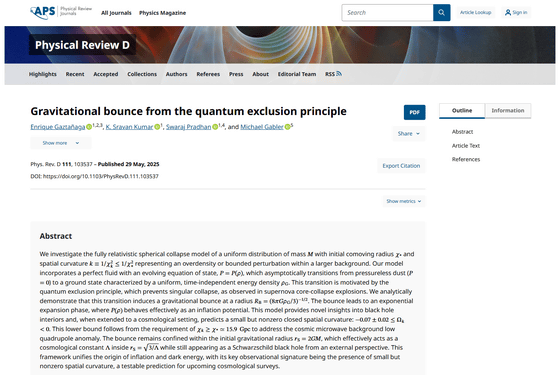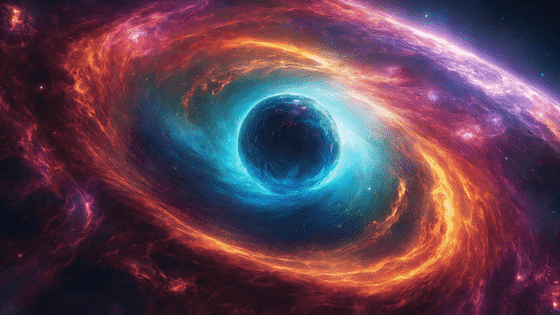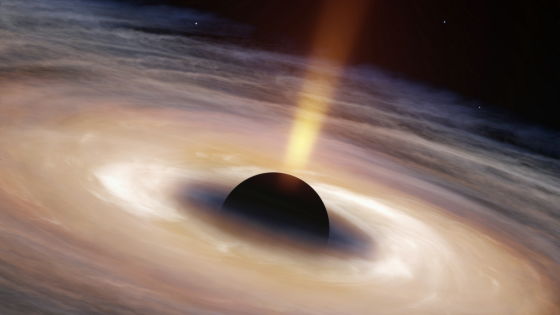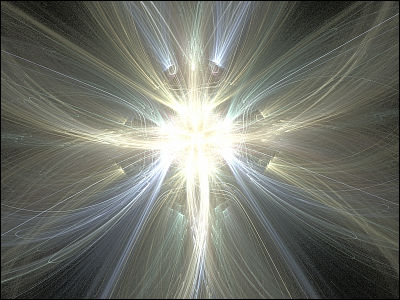A new theory that the 'Big Bang' was not the beginning of everything, but the result of a bounce inside a massive black hole formed by gravitational collapse

Enrique Gastañaga, professor of Cosmology and Gravitation at the University of Portsmouth in the UK, has presented a new view of the Big Bang, saying that it was the result of gravitational collapse that led to the formation of a massive black hole, followed by a rebound within the black hole.
What if the Big Bang wasn't the beginning? Our research suggests it may have taken place inside a black hole
Gastañaga points out that the Big Bang theory states that the universe began with a Big Bang, a point of infinite density where the laws of physics break down. 'This is not just a technical problem, but a deep theoretical problem that suggests we don't actually understand the beginning at all.'
To solve this problem in the Big Bang theory, the inflation theory was introduced, which states that there was a period of exponential expansion (inflation) very early in the birth of the universe , and furthermore, the concept of 'dark energy' was introduced to explain this accelerating expansion .
However, Gastañaga said, 'The standard cosmological model works only because of new factors that we have not directly observed. To solve these problems, we have taken a different approach, looking inward instead of outward. The pre-peer-reviewed paper by Gastañaga and his colleagues was published in Physical Review D.
Gravitational bounce from the quantum exclusion principle | Phys. Rev. D
https://journals.aps.org/prd/abstract/10.1103/PhysRevD.111.103537

Gastañaga and his team were not asking, 'What is the origin of the expanding universe?' but, 'What happens when an excessively dense collection of matter collapses under gravity?' It is known that stars can collapse to form black holes, but what happens inside a black hole on the other side of the event horizon is still a mystery.
The Penrose-Hawking singularity theorem shows that under general conditions, gravitational collapse will always result in a singularity, but the theorem is based on classical physics. In their paper, Gastañaga and his colleagues show that gravitational collapse does not necessarily end in a singularity. In their research, the size of the universe changes as a hyperbolic function of cosmic time as we approach a potential singularity.
'This simple mathematical solution explains how a collapsing mass of material can reach a dense state and then bounce outwards, entering a new expansion phase,' Gastañaga said.
Regarding the Penrose-Hawking singularity theorem's prohibition of such a result, Gastañaga explains that it is due to the Pauli exclusion principle, which states that two or more fermions cannot occupy the same quantum state. Gastañaga, on the other hand, says that the Pauli exclusion principle 'prevents the infinite contraction of the collapsing particles of matter,' which results in the collapse stopping and reversing, so 'the bounce is not only possible, but inevitable under the right conditions.'
In Gastañaga's 'black hole cosmology,' the observable universe is thought to exist inside a black hole that formed in a larger, 'parent' universe.
'We are not witnessing something emerging from nothing, but the continuation of a cosmic cycle shaped by gravity, quantum mechanics and the profound interrelationships between them,' Gastañaga said.
Related Posts:
in Science, Posted by logc_nt







